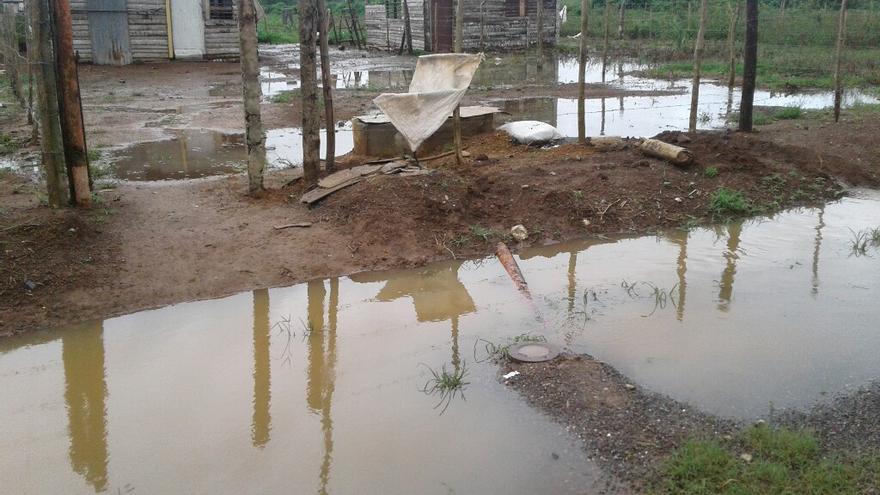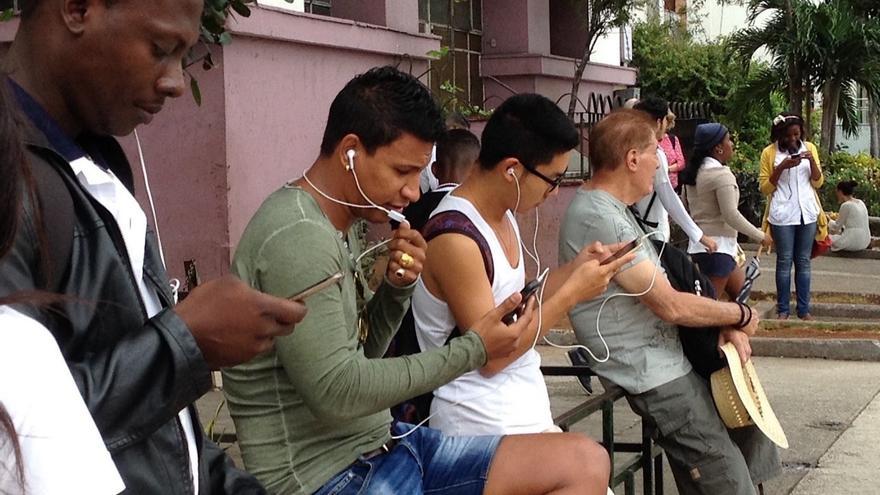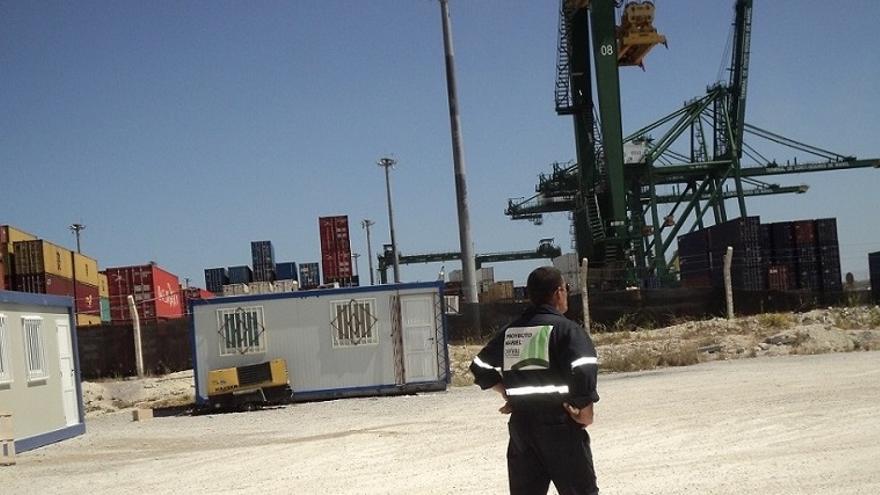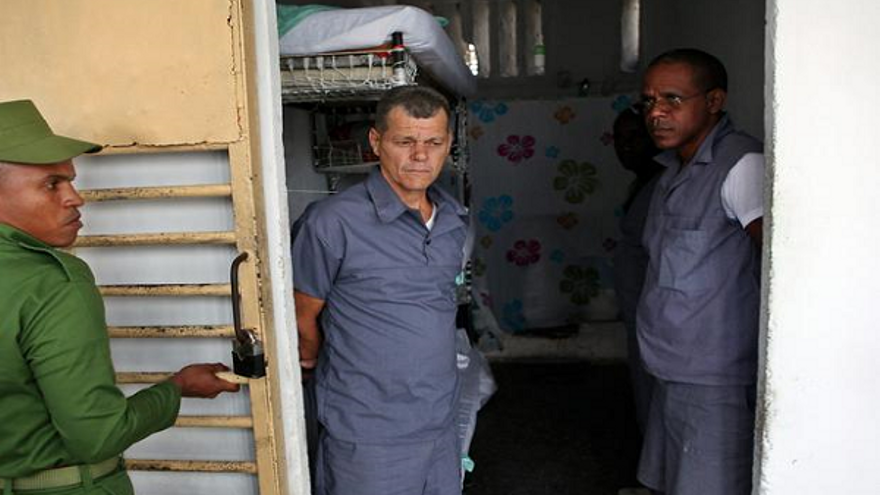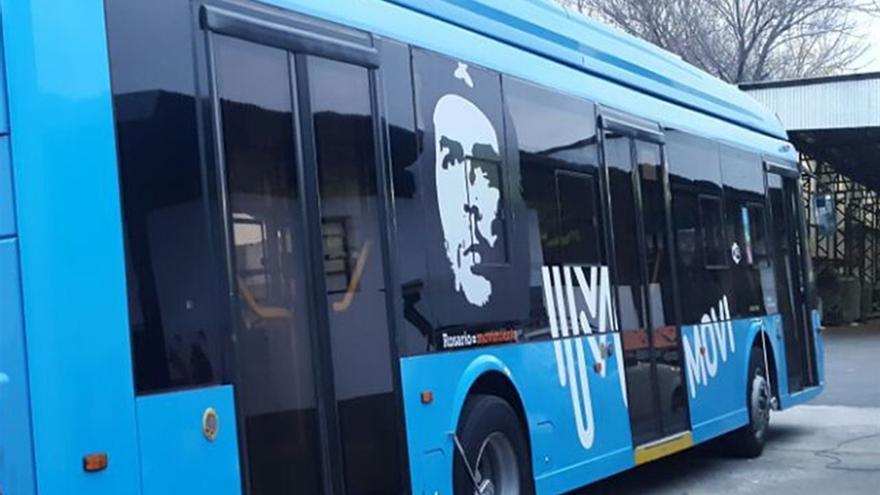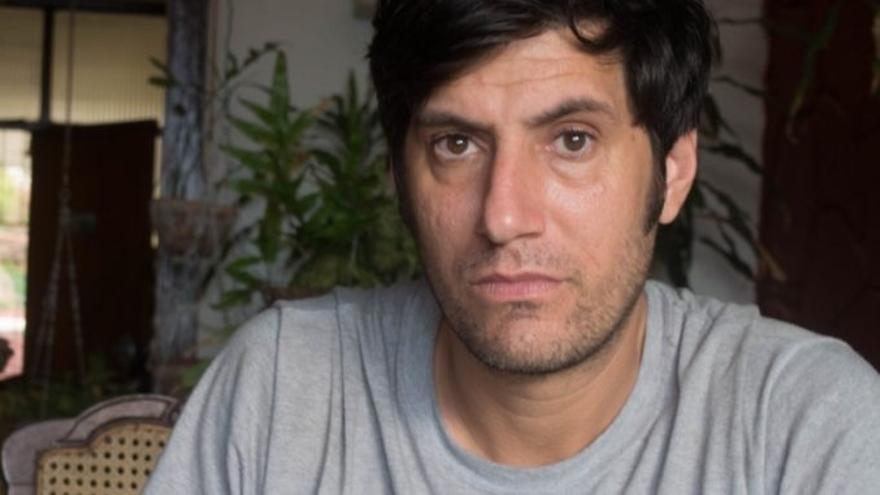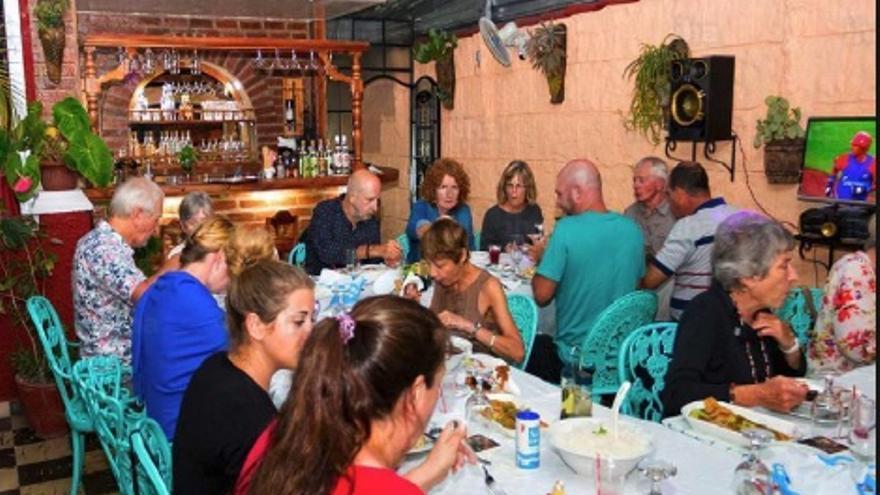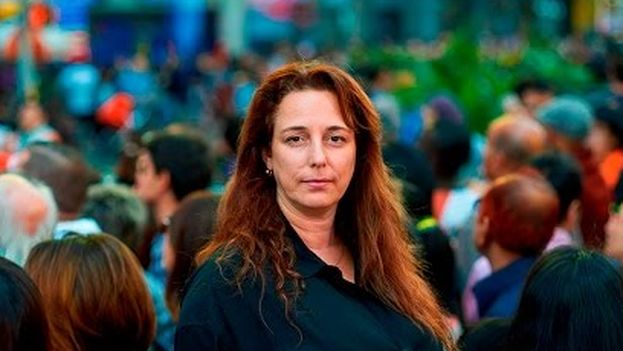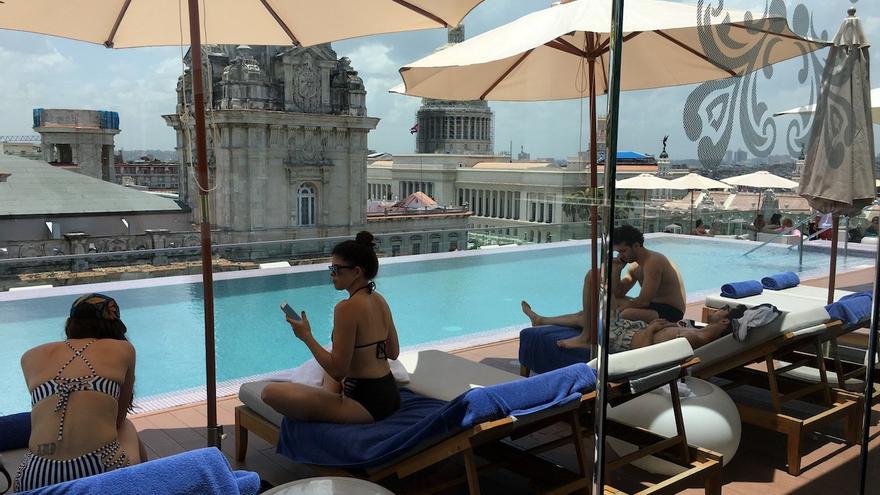
![]() 14ymedio, Marcelo Hernández, La Habana | Junio 19, 2018 — None of the customers who were enjoying the bar and pool on the rooftop of the Manzana Kempinski Hotel this Monday were staying at the accommodation. The luxurious colossus across from Havana’s Central Park is below 20% occupancy according to the calculations of its workers, due to the slowdown in tourism in Cuba and the high prices of the establishment.
14ymedio, Marcelo Hernández, La Habana | Junio 19, 2018 — None of the customers who were enjoying the bar and pool on the rooftop of the Manzana Kempinski Hotel this Monday were staying at the accommodation. The luxurious colossus across from Havana’s Central Park is below 20% occupancy according to the calculations of its workers, due to the slowdown in tourism in Cuba and the high prices of the establishment.
Opened in May of last year, with 246 rooms, of which 172 are standard, the Manzana Kempinski is apparently performing far below its projections. Despite this, the general manager, Xavier Destribats, said a couple of weeks ago that the Swiss hotel group in working on several other projects the state-owned Gaviota company. continue reading
“This seems like a museum, one of those that is very beautiful but almost empty,” a waitress told 14ymedio on condition of anonymity.
“We are afraid that there will be cuts in personnel and that they will send us home, as has happened with other hotels,” explains the employee who receives a little more than 300 Cuban pesos per month (less than $ 15) for her work. “Last week several clients who came to an event saved us, but they are about to leave,” she laments.
Located in an historic area, the hotel occupied the old Manzana de Gómez shopping center, a name Havanans still use to refer to the place. After several years of repairs it went from being an aged and dirty building to emerge with all its impressive architectural details restored.
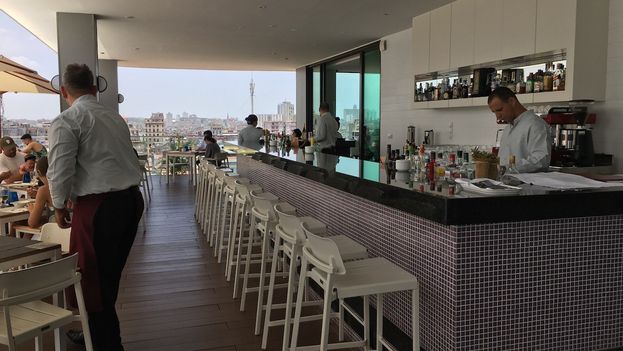
“Most of the guests who come to the bar come to admire the view of the city and the ’infinity’ style pool that attracts many fora little refresher,” says the bartender. “It is very peaceful up here and since we are open until midnight it’s a place for the tourists to go after they leave the concerts or the cultural activities in the area.”
“Many people come to look and browse because the restoration process was very painstaking and the hotel has spaces that make you want to stay, but putting your hand in your pocket to rent a room is a real stretch,” a waitress explained to this newspaper.
“If there are few guests, it makes no sense to work here, because the most important thing for us is the tips that the workers share at the end of the day, but in the last weeks it has been very poor,” she complains.
The employee calculates that the hotel is now below 20% occupancy, which other employees of the hotel and those working in the tourism sector confirm. “At the moment this seems like an investment for the long-term, because the hotel has little demand because of its prices,” confirms Katy Ramos, tour package manager.
The clumsy launch of the Manzana is the fault of factors that go beyond its prices. “There is always someone willing to pay dearly for good service, but what is happening has nothing to do with the hotel but with the whole country,” says Ramos. “There is a fall in the number of tourists which is very worrying to all of us who live off this business.”
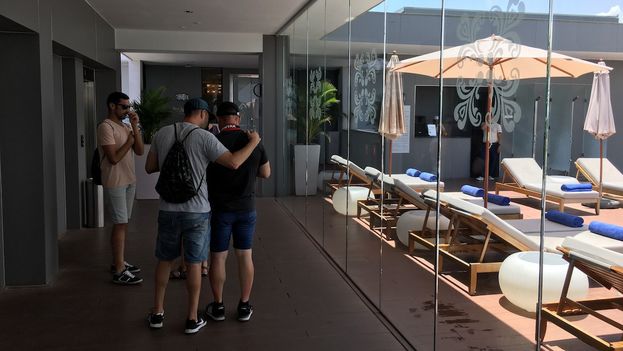
Tourism is Cuba’s second largest source of income, behind the sale of professional services abroad, and contributes 10% of the gross domestic product (GDP) in addition to generating half a million jobs. For the private sector it is also an important pillar that supports everything from rental houses, to private restaurants, private taxis and guide services.
From January through May of this year, Cuba has counted more than 2.1 million foreign tourists, 93% of those who had arrived during the same period in 2017. However, the figure “includes Cuban Americans who come to visit their families and also people who come to events and congresses, but don’t otherwise engage in tourism,” says Ramos.
The Government, however, maintains the official projections for 2018 of five million visitors with the aim of breaking the previous records of almost 4.7 and 4.5 million travelers in 2017 and 2016, respectively.
But the winds that blew away the diplomatic thaw between Havana and Washington, which attracted all sorts of celebrities to the island, seem to have changed course.
At the end of 2017, the United States Government announced that it would enforce a promise made by President Donald Trump in June of that same year, to crack down on commercial and personal travel of Americans to the Island.
The US Treasury published a list of more than 100 companies, which included restaurants and two rum distilleries, that travelers from that country may not visit. Several tourism agencies and at least 84 hotels throughout the Island appear on that list and the Manzana Kempinski is one of them.
Although it is managed by the German company Kempinski, based in Switzerland, the property is owned by the Cuban military corporation GAESA, which appears on the blacklist drafted by the Trump administration.
However, even if they are not staying at the site due to lack of resources or fear of penalties, many customers come in search of good services and the impressive supplies of the Manzana.
In the midst of the shortage of food and other products that have characterized the last weeks on the island, dozens of tourists come to the hotel every day in search of a good meal or those drinks that are scarce elsewhere.
In a city “where there is a scarcity of almost everything, this is a haven of comfort,” says Empar, a Spaniard who on Father’s Day Sunday was enjoying a cold imported beer on the terrace after “having walked through several stores and markets without finding anything I wanted. “
“I came for the views but of course I can not pay what they ask for a room,” he told 14ymedio. A night in the Patio room, the cheapest in the entire hotel, cost about $440 without breakfast, while the most exclusive, the corner suite goes for $1,355.
“It’s a shame that despite being half empty they do not offer a significant reduction in prices, because that would make many customers like me feel encouraged to stay,” says Empar.
Cuba is now in its low season of foreign tourism, because in the summer months people choose destinations cooler than the hot tropical sun of the island. These are the same months when nationals have a chance to be tourists because of the school holidays.
But the Manzana Kempinski is beyond the pockets of Cubans living on the island, where an average salary does not exceed the equivalent of 30 dollars a month. “Before leaving it empty they could lower the prices and fill it with Cubans,” joked Humberto, a baseball fan reconverted to football supporter during the World Cup in Russia and a visitor to the nearby sports club, known as La Esquina Caliente.
This character of “forbidden apple (manzana)” due to its stratospheric rates, has earned the accommodation many criticisms, especially for the contrast between its luxurious conditions and the neighborhood that surrounds it, plagued with serious housing problems.
The young artist Luis Manuel Otero Alcántara put on three artistic performances at the luxury hotel. In the first of them, he questioned the disappearance of the bust of the communist leader Julio Antonio Mella, previously stationed there; in the second he brandished a sledge hammer a few inches from the window of an exclusive store in the basement of the building; and in the third he ran a raffle to win a night in the only five-star hotel in the country, which was won by a young man about to enter to Compulsory Military Service.
“That may have been the first and only ordinary Cuban who has slept in those beds,” speculates Humberto, while gazing from the Central Park toward the empty entrance of the Manzana Kempinski.
____________________
The 14ymedio team is committed to serious journalism that reflects the reality of deep Cuba. Thank you for joining us on this long road. We invite you to continue supporting us, but this time by becoming a member of 14ymedio. Together we can continue to transform journalism in Cuba.

